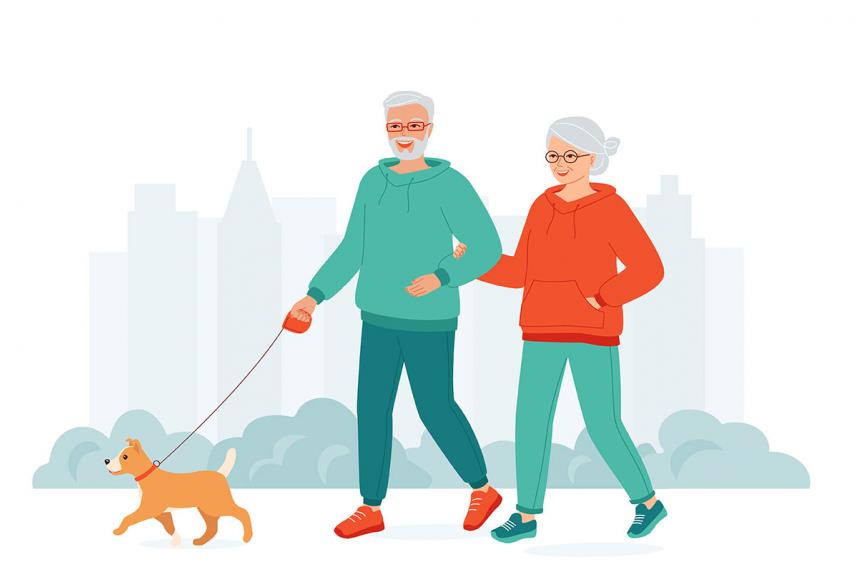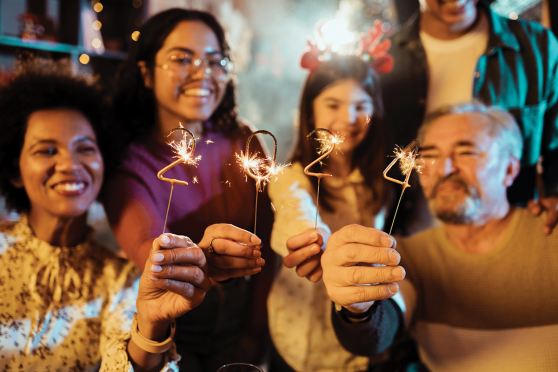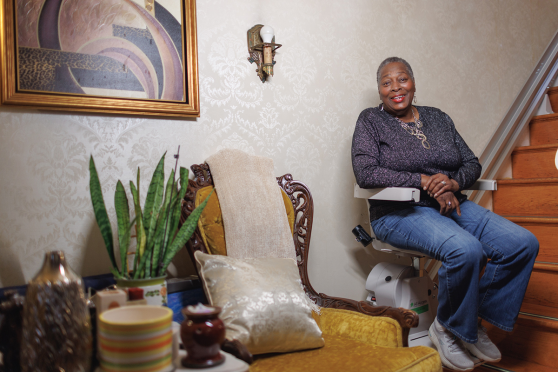Age Strong: 6 Quick Fixes to Fall-Proof Your Life
Don’t let a tumble put you on the sidelines. Here’s how to stay safe

Every year, 3 million older adults take a tumble that lands them in the emergency room. And 1 out of every 5 of those falls causes a broken bone or a head injury, according to the Centers for Disease Control and Prevention. Lots of those injuries could have been prevented with some simple fixes. Here’s what you can do to keep yourself safe.
1. Check your senses.
You need all your senses to stay balanced, so when even one is impaired, your chance of falling increases. “Our vision interprets the space around us, so blurred or double vision can alter our balance,” says Karilyn McCloskey, PT, MS, a specialist in geriatric physical therapy based in Cherry Hill, New Jersey. “And inner-ear problems can also affect our balance. Staying on top of vision and hearing checkups will help protect you from falls caused by an undiagnosed issue such as a balance disorder.”
2. Ask about side effects.
Medications can be a real lifesaver. But some — including over-the-counter drugs — can increase your chances of falling by causing side effects such as poor balance, lowered blood pressure, drowsiness, blurred vision, or impaired judgment. Some high blood pressure medications, for example, are known to cause dizziness. Even over-the-counter meds, including some decongestants and antihistamines, can make you dizzy. Talk to your doctor or pharmacist about potential side effects.
3. Go shoe shopping.
To stay safe, be like Cinderella: If the shoe fits, wear it — but only if it fits exactly right. “Proper, supportive footwear is important,” McCloskey says. “The way your foot hits the ground affects the way the rest of your body reacts to move forward. Prevent slips by making sure your shoes fit properly and have good traction.”
Foot discomfort can also lead to falls, says McCloskey. “Any numbness, tingling, or poor circulation should be discussed with your health care professional.” People with diabetes, for example, sometimes experience peripheral neuropathy, a loss of sensation in the feet. That can increase your risk of falling.
4. Clear the way.
It’s easy to trip over cords, piles of papers, and even loose rugs. So get rid of the clutter. “Make your home a safer place by clearing doorways, stairways, and landings of anything you might trip over,” says McCloskey.
5. Respect your limits.
When you need that tray above the fridge or a hat that’s just out of reach, standing on a wobbly chair or step stool seems like a logical solution. But McCloskey advises to think before you act. Consider your balance issues and know your own limitations. Skip the step stool or the chair and get an inexpensive assistive device like one of these, to help you grab what you need. Handy tools like grabbers and reachers can give you easy access to high shelves and out-of-the-way corners, without the risk of falling.
6. Stay active.
As we get older, our muscles may become weaker and less flexible. That makes your chance of falling down go way up. Staying active is one of the best ways to keep on your feet. Check with your doctor or physical therapist for suggested strength and flexibility exercises you can work into your daily routine. One excellent strategy for balance and flexibility: yoga. Find a local class for older adults or try this online beginner class.
Little fixes, big returns
Try these simple home improvements to make your home as fall-proof as possible.
- Make sure you have adequate lighting throughout your home, especially on stairways, and leave night-lights on in bathrooms and hallways.
- Install grab bars. “If you’re concerned about your balance in the bathroom, a grab bar near the shower and another near the toilet will help protect you from a fall,” says McCloskey.
- Remove throw rugs — or add anti-slip tape or grips, available at hardware and home-improvement stores.
- Make sure stair railings are secure; consider having railings installed on both sides of the stairs.
Have you had a fall in the past? Would you like some help making your home environment safer? Speak to your health care provider, who can connect you with a physical and occupational therapist to improve your balance and evaluate your home’s safety. Or find assistance through your local Area Agency on Aging.



